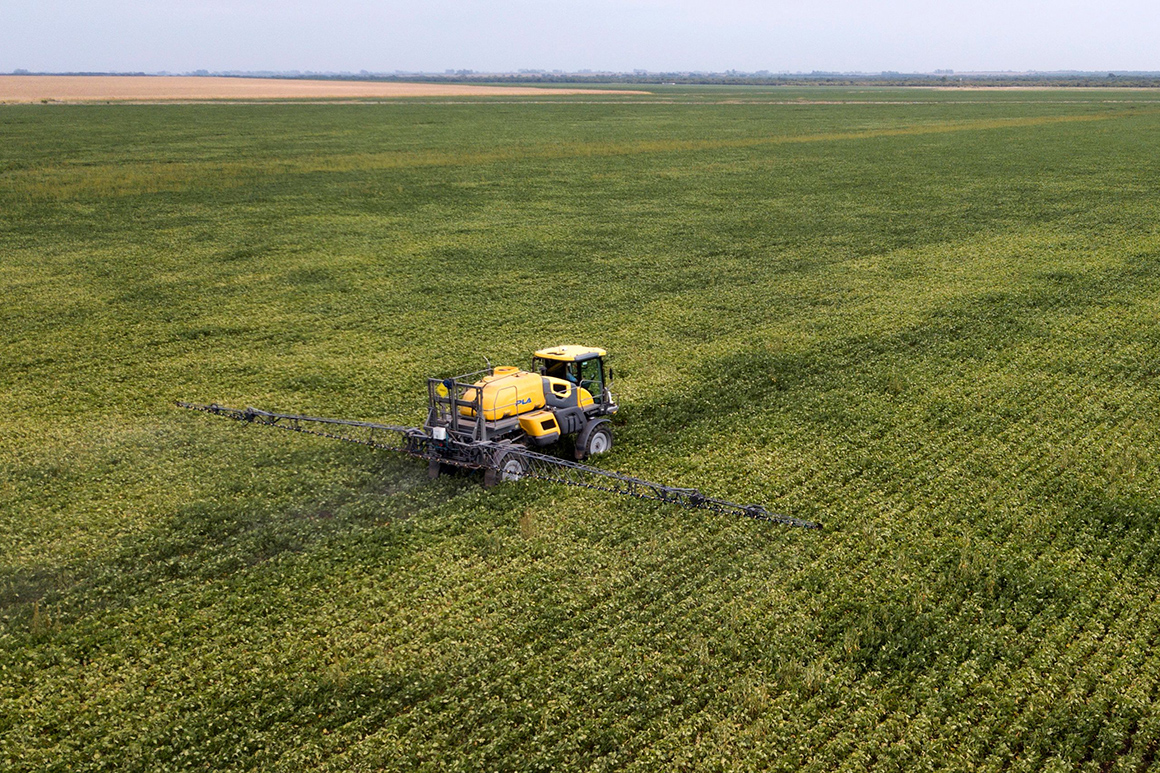Appeals court orders EPA to act on demands to ban chlorpyrifos

A federal appeals court on Friday has given the EPA 90 days to take action on demands by environmental groups to ban a widely used pesticide.
Groups are hoping that the decision by the U.S. Court of Appeals for the 9th Circuit in San Francisco will mean that the government will soon prohibit the use of chlorpyrifos. The EPA, under the Obama administration, decided to ban it in 2015 after scientific evidence showed the pesticide has the potential to damage brain development in children.
The EPA, however, reversed the prohibition under then-Administrator Scott Pruitt, in a move that was an early step in carrying out President Donald Trump’s deregulatory agenda.
The agency now has three months to decide what to do in light of the appeals court ruling. “We are reviewing the court’s order and will be taking final action on the administrative objections before the agency within 90 days,” EPA spokesperson James Hewitt said in an email to POLITICO.
Environmental groups are hopeful that a ban will soon be in place.
“It is hard to be optimistic when EPA has delayed for a dozen years, but based on the record before the agency, the science and the law, we think that the only thing that EPA can do is ban the use of chlorpyrifos on food,” said Marisa Ordonia, an attorney for Earthjustice, one of the groups suing the EPA.
The long-running case dates back to 2007 but the latest phase re-examined a ruling also on the 9th Circuit.
In 2018, three appellate judges of the court ruled that the EPA unlawfully postponed the agency’s efforts to ban chlorpyrifos. But in the fall, the 9th Circuit took the rare step of granting the EPA’s request to have the full panel of the appeals court rehear oral arguments.
That hearing took place in March, and several judges seemed exasperated by the delays.
“You’ve had 10 years or more to look at this,” one of the judges, Margaret McKeown, told a Justice Department attorney during the hearing. “We’ve changed administrations, apparently we’ve changed science — how much more time do you need?”
Seven states and the District of Columbia stood on the side of the environmental groups in the case. But some groups, such as the American Farm Bureau Federation and CropLife America supported the government’s decision to life the ban, arguing that chlorpyrifos is necessary to protect crops from pests.
Environmental groups said it’s possible that the Trump administration will continue to drag out the case.
“EPA’s response to the objections could result in them finalizing the ban that they proposed in 2015, or they could uphold its denial of the 2007 petition and try to justify that decision (despite their own scientists finding that chlorpyrifos is unsafe),” Ordonia said. “Either way, once EPA issues a decision on the objections, we can go back to the court and make our case on the merits for why EPA must ban this toxic nerve agent.”
Corteva Agriscience sells the pesticide under the trade name Lorsban. Chlorpyrifos is sprayed by farmers on fruits and vegetables to kill pests, among a total of more than 50 crops grown in the U.S.
“It is long past time to take action to protect people, particularly children, from a highly toxic chemical,” Andrew Rosenberg, director of the Center for Science and Democracy at the Union of Concerned Scientists, told POLITICO. “EPA’s own science review found the pesticide dangerous but Administrator Pruitt sided with chemical companies to allow its continued dangerous use. Time to redress that wrong.”
Liz Crampton contributed to this article.